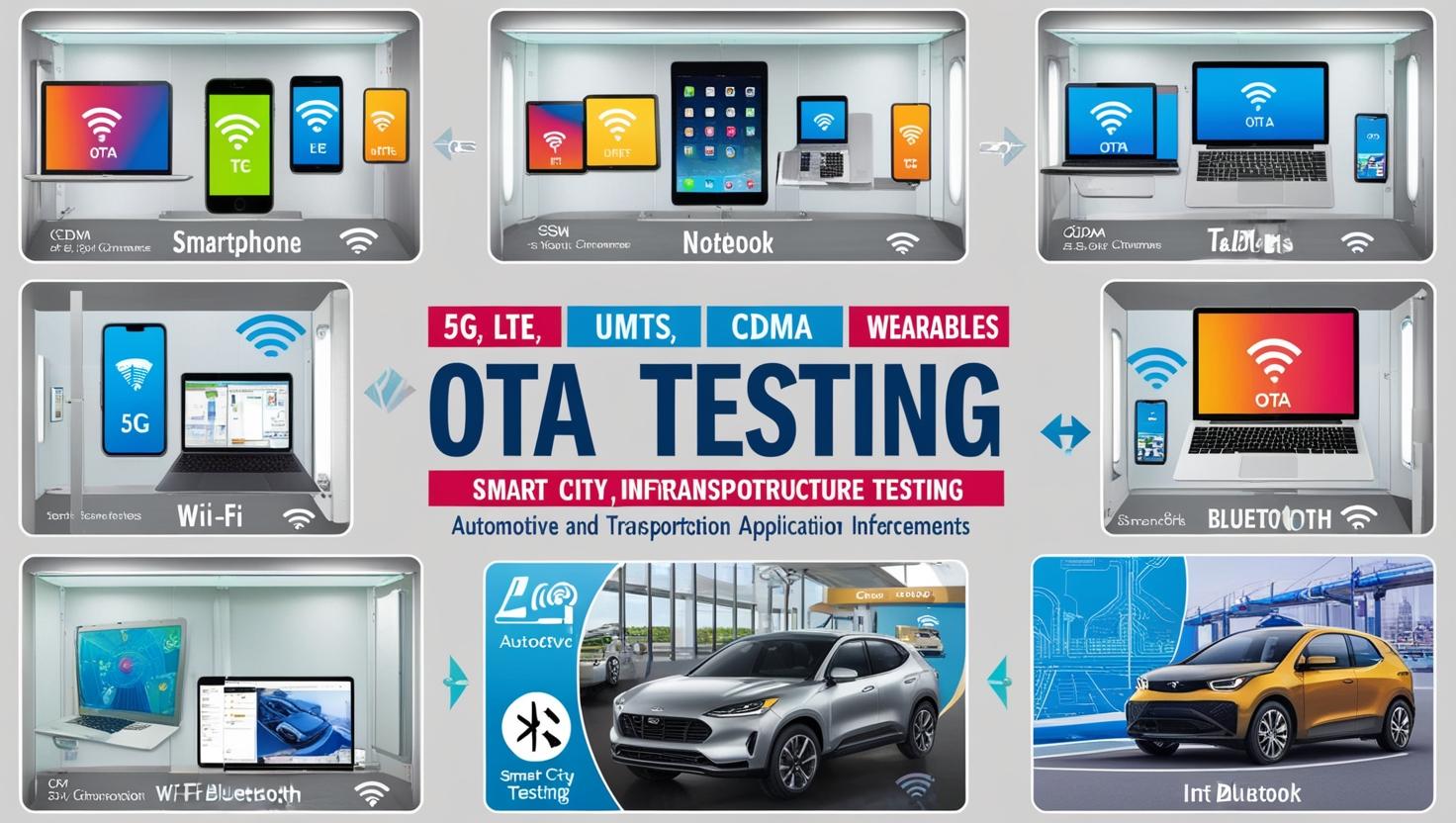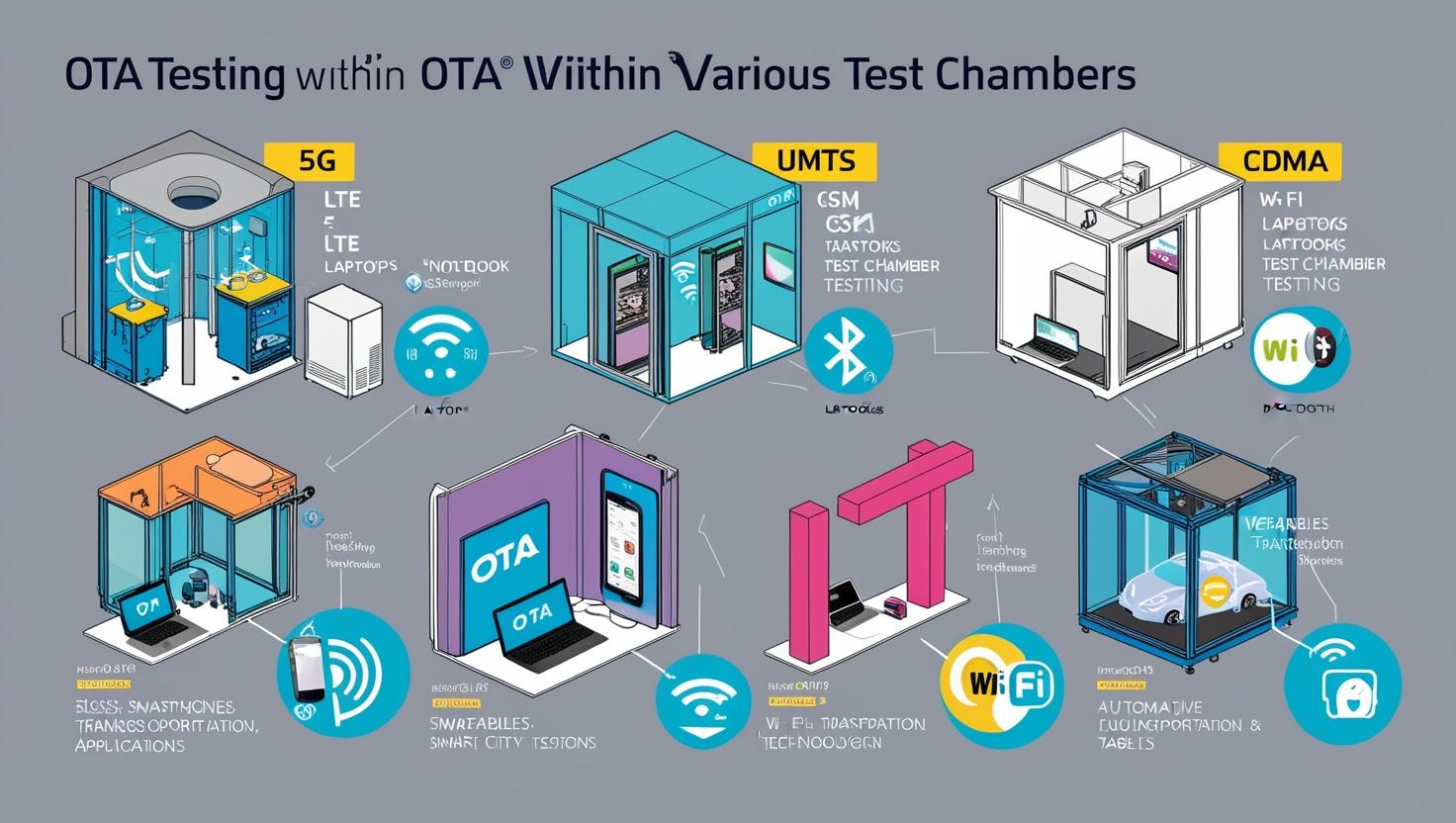The Asia Pacific region is witnessing an unprecedented surge in technological advancements, especially in the wireless communication industry. As the demand for faster, more reliable wireless devices continues to rise, the importance of Over-the-Air (OTA) testing has become more pronounced. OTA testing ensures that mobile phones, IoT devices, and other wireless communication tools perform optimally in real-world conditions. This article delves into the growing significance of OTA testing in the Asia Pacific market, its key drivers, and the innovations shaping the future of seamless connectivity.
What is OTA Testing?
Over-the-Air (OTA) testing refers to the evaluation of wireless devices’ performance by transmitting signals wirelessly, simulating real-world network conditions. This type of testing is essential to determine the efficiency of the device’s wireless communication, including signal strength, network connection stability, voice quality, and data throughput. OTA testing is typically conducted on mobile phones, smart devices, IoT gadgets, and even autonomous vehicles, ensuring that these devices can perform reliably in diverse environments.
The Growing Importance of OTA Testing in Asia Pacific
Asia Pacific has emerged as a global leader in the wireless communication sector, with countries like China, Japan, South Korea, and India leading the charge in the development and adoption of new wireless technologies. The rise of 5G networks, the proliferation of smart devices, and the ongoing expansion of IoT applications have further elevated the demand for robust and reliable wireless performance.
In this environment, OTA testing becomes a critical component in the lifecycle of wireless devices. As manufacturers strive to meet stringent quality standards and ensure consumer satisfaction, OTA testing helps identify issues that may affect device performance in real-world scenarios, from signal interference to connectivity disruptions. As the region accelerates the rollout of next-generation technologies such as 5G and IoT, OTA testing provides valuable insights that ensure seamless connectivity across a wide range of devices and networks.
The OTA Testing industry is expected to reach USD 3.17 billion by 2029, up from USD 2.23 billion in 2024, at a CAGR of 7.3% from 2024 to 2029.
Key Drivers of the OTA Testing Market in Asia Pacific
- 5G Deployment and Growth
The rollout of 5G networks in Asia Pacific has created a significant demand for testing solutions that can accommodate higher speeds, lower latencies, and massive device connections. OTA testing is essential for validating the performance of 5G-enabled devices and ensuring that they meet the performance expectations of consumers and network operators. As 5G adoption continues to accelerate, the need for specialized OTA testing solutions will remain paramount. - IoT and Smart Devices Expansion
The proliferation of IoT devices, including wearables, smart homes, and connected vehicles, is driving the demand for robust wireless connectivity. These devices often rely on seamless communication between multiple components, necessitating thorough testing to ensure that they maintain stable connections across different wireless protocols. OTA testing plays a vital role in ensuring that IoT devices meet performance standards in diverse environments, from urban areas to rural regions with varying network conditions. - Increased Consumer Expectations
With the increasing number of wireless devices available in the market, consumers have heightened expectations for seamless performance, such as uninterrupted connectivity, fast data transfer, and high-quality voice communication. Manufacturers are under pressure to meet these expectations, making OTA testing a key tool to identify performance issues early in the development cycle. Ensuring that wireless devices provide a consistent and reliable user experience is crucial to retaining customer loyalty. - Regulatory Compliance and Quality Standards
As the wireless communication industry becomes more complex, regulatory bodies in the Asia Pacific region are implementing stricter guidelines for wireless device performance. OTA testing helps manufacturers meet these regulatory requirements by ensuring that devices comply with network quality standards. This is particularly important in markets like Japan, South Korea, and India, where regulatory standards are often more stringent.
Download PDF Brochure @
https://www.marketsandmarkets.com/pdfdownloadNew.asp?id=168439990

Technological Advancements in OTA Testing
As wireless communication technologies evolve, so do the testing methodologies. The OTA testing market in Asia Pacific is benefiting from several innovations that are improving testing efficiency, accuracy, and scalability.
- Multi-Device Testing
With the rise of 5G networks and the growing number of connected devices, manufacturers are increasingly focusing on multi-device testing. Modern OTA testing solutions can now simulate real-world conditions involving numerous devices on a network simultaneously. This is especially important for IoT and smart home systems, where multiple devices communicate with each other via wireless protocols. - Virtualized and Remote Testing
Virtualized OTA testing solutions are transforming the landscape of device testing by allowing manufacturers to perform tests remotely without the need for physical testing labs. This is particularly beneficial for manufacturers who need to test a large number of devices or those that have limited access to testing infrastructure. Virtualized testing environments also help reduce costs and time-to-market for new products. - Advanced Test Chambers
To simulate various real-world conditions, advanced test chambers are being developed that mimic the challenges faced by wireless devices in the field. These chambers are capable of creating different environmental scenarios, such as varying signal strengths, network congestion, and interference, to assess the device’s performance in diverse conditions. This helps ensure that devices can maintain optimal performance in a variety of environments, from urban hotspots to rural areas with limited network coverage. - 5G-Specific Testing Solutions
As 5G technology is rolled out across the Asia Pacific region, specialized OTA testing solutions are emerging to meet the specific requirements of 5G-enabled devices. These solutions are designed to test 5G frequencies, including mmWave (millimeter wave), and validate the performance of devices under the challenging conditions associated with high-frequency bands. Such testing ensures that 5G devices can deliver the promised high-speed data transfer and low-latency performance.

Market Outlook and Future Prospects
The Asia Pacific OTA testing market is poised for strong growth in the coming years. According to industry analysts, the increasing adoption of 5G, IoT, and smart devices is expected to drive demand for OTA testing services and solutions. Moreover, advancements in testing technologies, such as virtualized environments and multi-device testing, will enhance the scalability and efficiency of testing processes.
The market will likely witness further consolidation, with leading players in the OTA testing space forming strategic partnerships with device manufacturers, telecom operators, and technology providers to offer end-to-end testing solutions. Additionally, as the Asia Pacific region continues to be at the forefront of wireless communication innovation, the demand for high-quality, reliable testing services will remain strong, making OTA testing an essential component in ensuring the success of next-generation wireless technologies.
The Asia Pacific OTA testing market is a cornerstone of the wireless communication industry, playing a critical role in ensuring that mobile phones, IoT devices, and other wireless technologies function seamlessly in real-world conditions. As the region continues to innovate and deploy new technologies like 5G, IoT, and next-generation mobile devices, the need for effective OTA testing will only grow. By enabling manufacturers to deliver high-performance devices that meet consumer expectations and regulatory standards, OTA testing is helping pave the way for a connected, efficient, and high-performance digital future.
